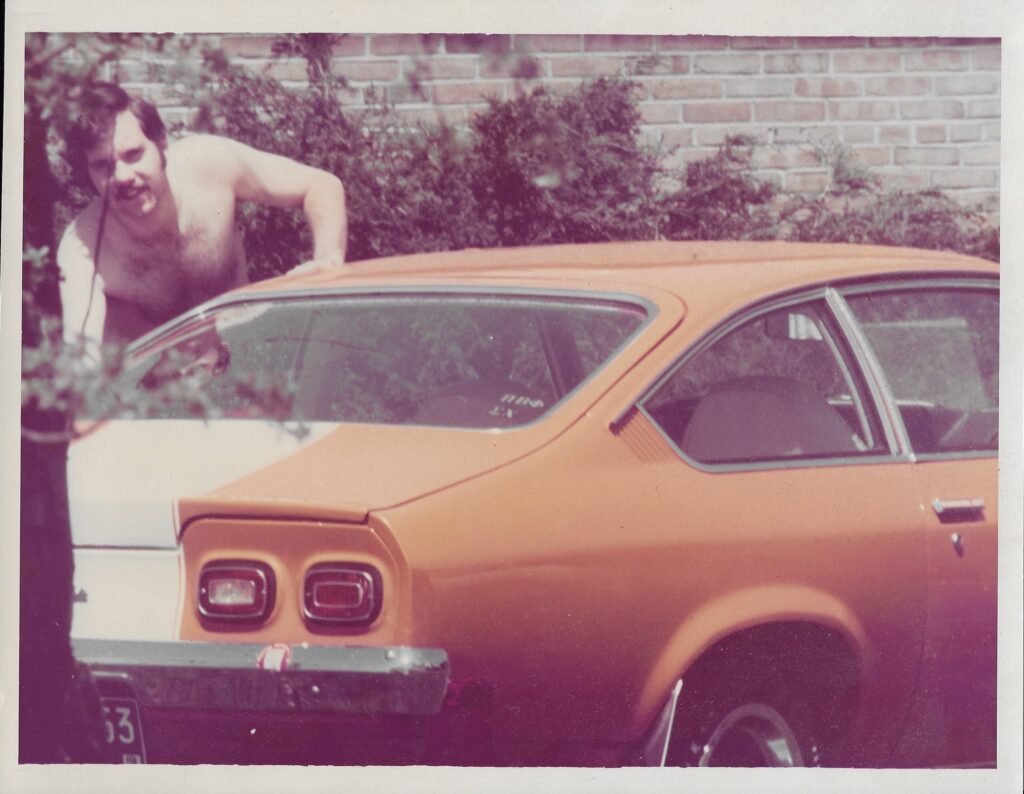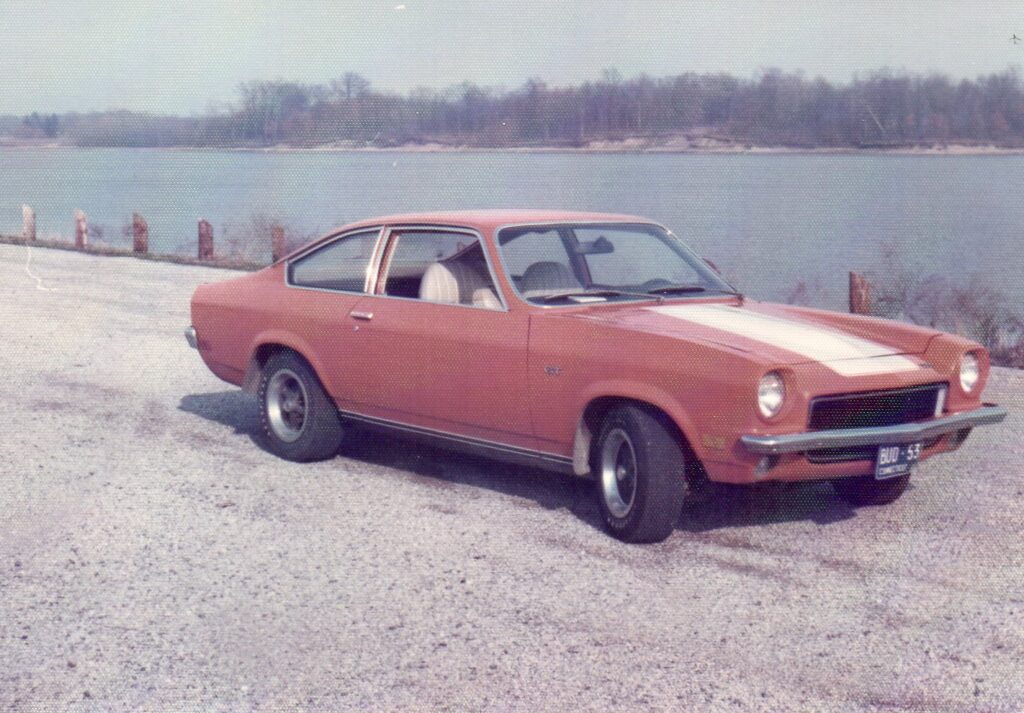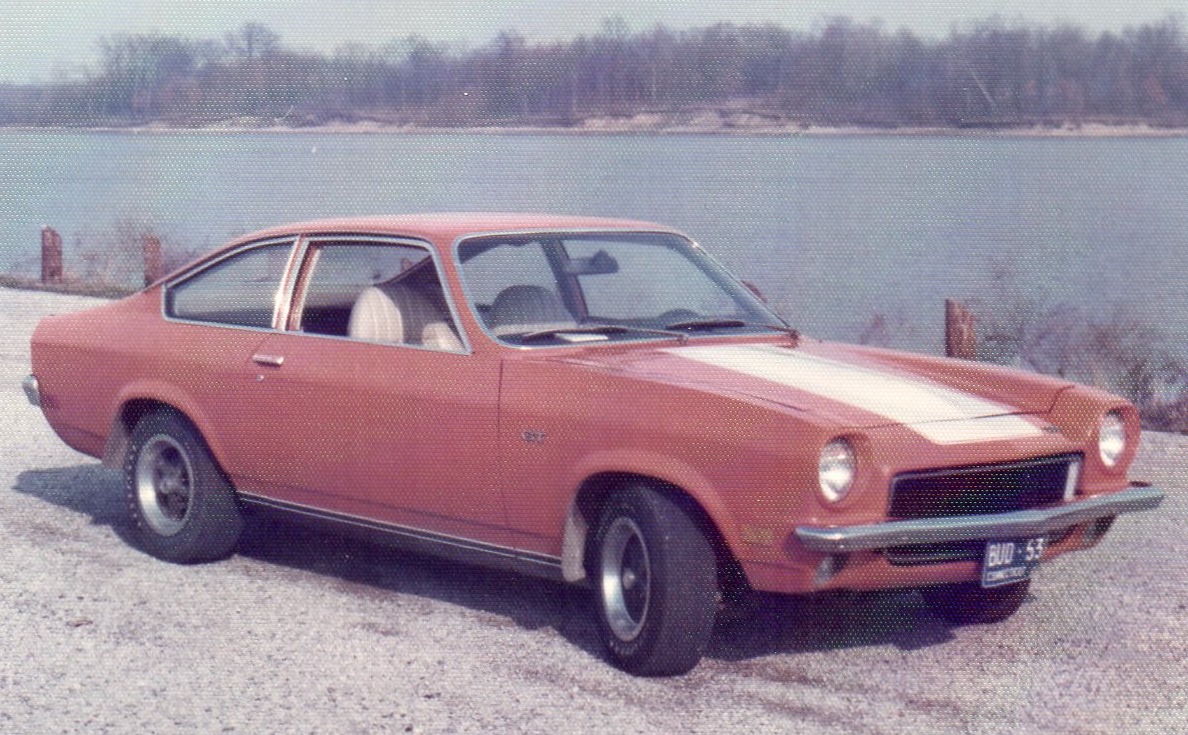BY BUD WILKINSON /
HARWINTON, CT – It sounds ridiculous given the model’s shoddy reputation. Of all the vehicles that have come and gone over the years, close to 30 if motorcycles are included, it’s a limited edition 1973 Chevrolet Vega GT that I wish was still in the garage.
No, it wasn’t as sound as the 1979 Honda Accord, as durable or good in snow as the 2002 Subaru Legacy Outback, as sporty as the Mazda Miatas, or a rock-solid as the Mercedes-Benz 300SD, but it was my first-ever new car.
It was the summer of 1973. My grandfather had passed away, left me a little money and I was itching to get rid of the thoroughly undependable two-seat 1969 Fiat 860 Spyder that I was driving.
It Just Called My Name…
One day, driving down South Main St. in nearby Torrington, I spotted a bright orange Vega GT sitting on the showroom floor at Zele Chevrolet. It has a broad white stripe from front to rear, matching orange carpeting, off-white vinyl seats and a four-speed transmission. An accent plate on the door handle noted it was a “Millionth Vega.’
I had to have it. With my parents’ blessing, I bought it. I’m guessing they figured it would have a better chance of getting me back and forth to college in Ohio. The Fiat certainly wasn’t up to the task.

The Vegas was a prime example of the products being churned out by Detroit at the time. The paint had an orange peel finish in spots. There were sharp edges and body parts didn’t fit together perfectly. It did handle pretty well, though, and what it lacked in power, it made up for in flashiness.
The Model Marked A Milestone
The “Millionth Vegas” was built by Chevrolet at its Lordstown, OH plant to mark having built one million copies of the inexpensive, subcompact model. The “Millionth Vegas” was a hatchback coupe with a rear seat that folded down. It was powered by a 140-cubic-inch, four-cylinder engine with a newly developed aluminum block. Only 6,500 or so examples of the “Millionth Vega” were produced.
I added a personalized “BUD 53” license plate and used it for my final two years at Ohio Wesleyan University. A classmate and I drove straight from Delaware, OH to Daytona Beach, FL for spring break our senior year. We then ventured to Fort Lauderdale and as far south as Duck Key to visit another college friend.
Vega GT Attracts A Cop
We made a mistake, however, in judging the driving time to the Florida Keys. Our miscalculation had us arriving in the middle of the night. Figuring that her parents wouldn’t appreciate being disturbed, we found a cul de sac in an area of new construction and bedded down. My friend got in the rear of the Vega and I stretched out under the rear end to nap for a few hours.
It wasn’t long until a police officer showed up to roust us. He was a nice guy, though. When we explained the circumstances and were able to provide the name of the Duck Key homeowner, he allowed us to go back to sleep.

The Vega GT lasted for three years and was replaced by a 1976 Ford Mustang II, another maligned model of the era. It was powder blue with a white vinyl top with sun roof. The Ford dealer in Delaware, OH had a leftover 1975 Mustang fastback as well, but it was bright orange. I figured a color change was due.
Vega A Relic Of The 1970s
Chevy’s Vega lasted seven model years – 1971 through 1977 – and more than two million were ultimately built. Its second high production year was 1973 when 427,300 came off the assembly line. While the model received awards, including “Motor Trend” magazine’s “Car of the Year” designation in 1971, the Vega is most remembered for being plagued by quality issues.
Maybe because I never beat on it, maybe because it was relatively cared for, maybe because I was just lucky, but the Vega never gave me a problem. Then again, maybe I didn’t keep it long enough. Wish I had it now. It’s certainly worth more than what I paid for it.
 RIDE-CT – Classic Cars Celebrating Classic Cars in Connecticut
RIDE-CT – Classic Cars Celebrating Classic Cars in Connecticut



Like this – especially the first photo.